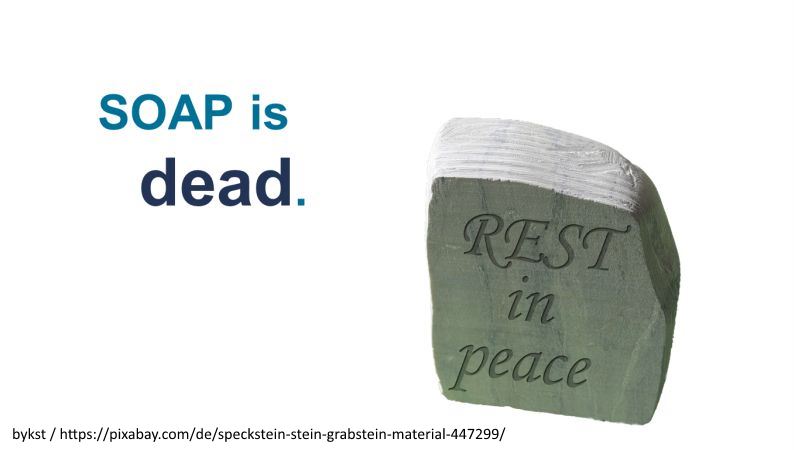I’ll continue my series of blog posts regarding the lessons we learned while SOA-fying our monolithic Adabas/Natural application with a more technical lesson:
SOAP is dead.

This may be a harsh statement, taking into account that we started out with Webservices based on SOAP and at the moment our whole infrastructure is based on it. However, while we were still searching for the right solution to the communication problem two major programming languages stopped supporting SOAP out of the box: Groovy and Ruby. And we used both of them.
If you take a closer look at the current notions in architecture and distributed systems, you’ll find plenty of conference talks and frameworks for providing and consuming REST services. However, SOAP seems to be legacy technology already.
To be honest, we don’t have a single REST service in production, yet. But after working with SOAP Webservices for quite some time now, I can definitely see the advantages of a more loosely coupled approach like REST. The interface design for SOAP services can take quite a lot of time, because you have to define individual operations and data types. And changing the interface – e.g. adding a parameter – leads to a required re-build of all systems using it. With REST you only need simple CRUD operations and can use JSON as a very flexible data format that can be added to later on.
I’m glad that Integration Server provides an easy means to publish REST services. You can even put them on top of existing services and simply provide a more flexible interface to the consumers. This is definitely a solution I want to try out in the near future.
So, if you start with an SOA today, take a closer look at REST and don’t blindly use the default implementation SOAP as it may not be supported any more in the near future.
Soap also requires more learning than REST. SOAP in my opinion is complex. This WSDL, things seems difficult to absorb therefore YES! I think SOAP is now legacy
Read about BPM and bowl before sending soap/wsdl to hell.
Hi Valentin,
I’m using SOAP myself 😉 The image was only meant to provoke thinking about the pros and cons of the technology.
Best regards,
Stefan